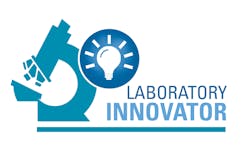What made you decide to pursue transfusion medicine for your career?
Can you describe a clinical impact of your academic achievements?
At Grady Memorial Hospital in Atlanta, we designed, implemented and continuously improved a massive transfusion protocol, which resulted in more patients surviving trauma. We also studied the pathophysiology of early trauma induced coagulopathy with the goal of improving treatment. The impact of this research stays with me as I continue to participate in and support the development of new products to improve patient outcomes.
Your career has also included work in cellular therapies. How are blood centers positioned to advance into this space?
The cellular therapy space is an ideal area for blood centers to grow. Blood centers are experts in donor recruitment and eligibility, collection, processing, storage and distribution, which happen to be the core competencies of cellular therapies. Some blood centers are expanding their collections to mononuclear cell collections used for cellular therapies, while others are building and participating in cellular therapy manufacturing. At New York Blood Center, we launched Comprehensive Cell Solutions to help advance these new therapies. We provide the gamut of cell therapy services to our medical center partners, as well as biotech and pharmaceutical companies. New ventures also engage the employees who are excited to learn and want to be part of the growing industry.
You’ve written many publications about the recruitment and retention of African American blood donors. Why is blood donation from underrepresented minorities so important?
There are two major reasons why underrepresented minority donation is so important. First, red blood cell antigen matching between the donor and recipient is critical to prevent red blood cell alloantibody formation. These alloantibodies can result in severe adverse outcomes, including hemolytic transfusion reactions, in patients with sickle cell disease. Currently, there are not enough antigen-matched units for these patients. Antigen matching requires donors who have similar genetic backgrounds. Thus, minority donors are needed to support the needs of patients with sickle cell disease. Second, U.S. demographics are changing with increasing numbers of underrepresented minorities while the blood supply needs remain. Therefore, all individuals who can donate are needed to meet this continuing demand. The industry cannot rely on the current aging, donor pool.
Prior to becoming AABB president, you served on the Board of Directors and as a member of various committees. How did this prepare you for your new position?
I was fortunate to be on the Accreditation Program Unit early on my career, and from there became its chair, and co-founded the transfusion medicine fellowship sub-section of the current transfusion medicine section. These experiences created a wonderful network of colleagues. Throughout the years, I have had the opportunity to learn about collaborative projects and written multiple documents with colleagues who have different backgrounds and expertise. Through these opportunities, I developed leadership experience and learned how to manage a committee of dedicated volunteers. AABB has also provided rich academic experience by enabling me to be an associate editor of Transfusion and overseeing the “How Do I” section for about 10 years. Research support through the National Blood Foundation has further allowed me to study minority blood donation.
As AABB president, what are the main goals you hope to achieve?
My primary goal is to serve the community and make AABB an even more vibrant organization. I am looking forward to working on and supporting the implementation of AABB’s new strategic plan, particularly by promoting the ability of the blood system to meet patient needs, championing the growth of cellular therapies and other biotherapies, and driving quality and safety in blood and biotherapies.
AABB’s new mission is to be “a connected community dedicated to advancing transfusion medicine and biotherapies. From donor to patient. From lab to bedside.” Why did AABB update its mission this year?
AABB’s new mission, vision and strategic plan were guided by the thoughts, opinions and experiences of our members. The fields of transfusion medicine and biotherapies are rapidly evolving, and this renewed commitment ensures that AABB is well-positioned to help our community address challenges and embrace new opportunities. AABB’s updated vision — “Improving lives by making transfusion medicine and biotherapies safe, available, and effective worldwide” — showcases our focus on advancing patient and donor safety both in the U.S. and internationally.
What are some of the biggest challenges you anticipate for AABB?
AABB needs to make decisions that are best for the community at large, and that can pose challenges in the short term. My hope is that by advancing AABB’s mission and vision, everyone will feel that they have contributed and have been heard. I believe that through listening and discussing we can come to a stronger and more unified decision


